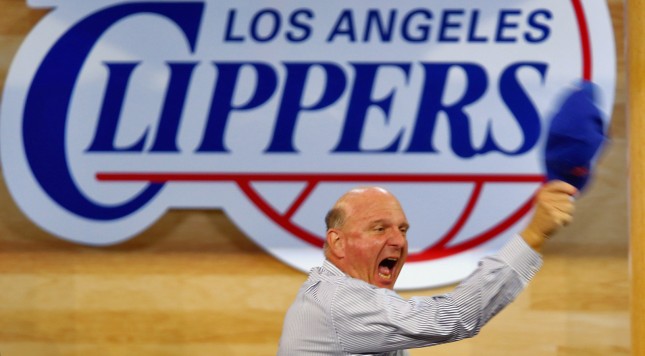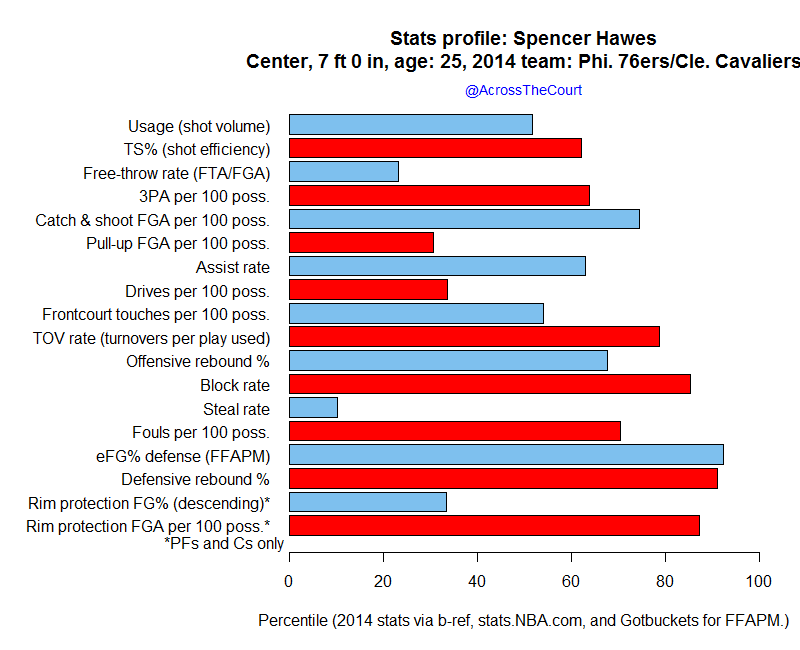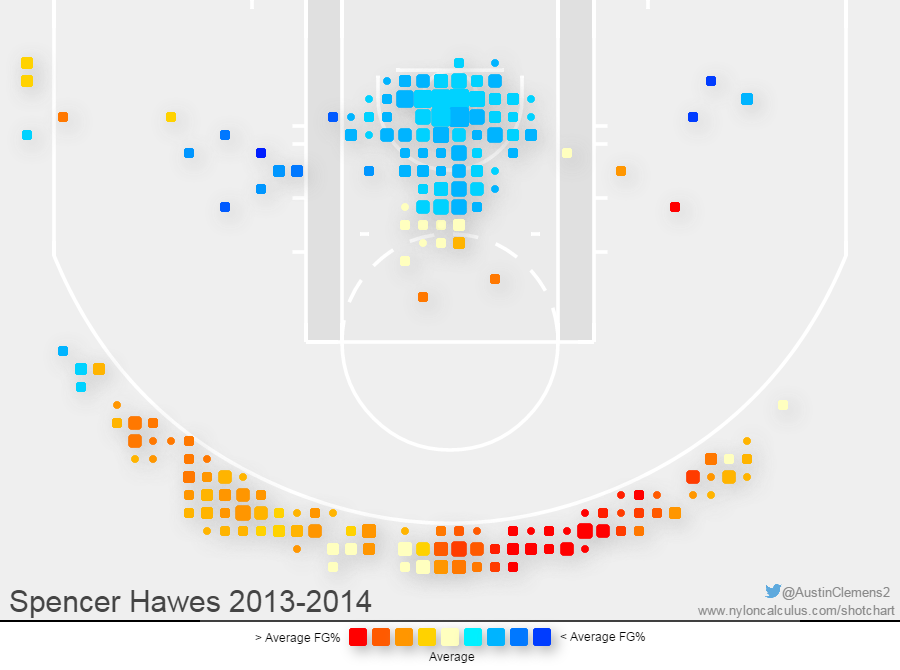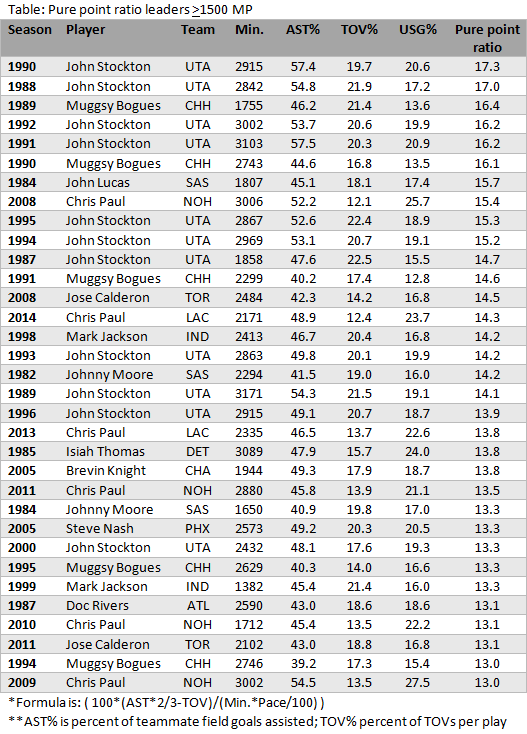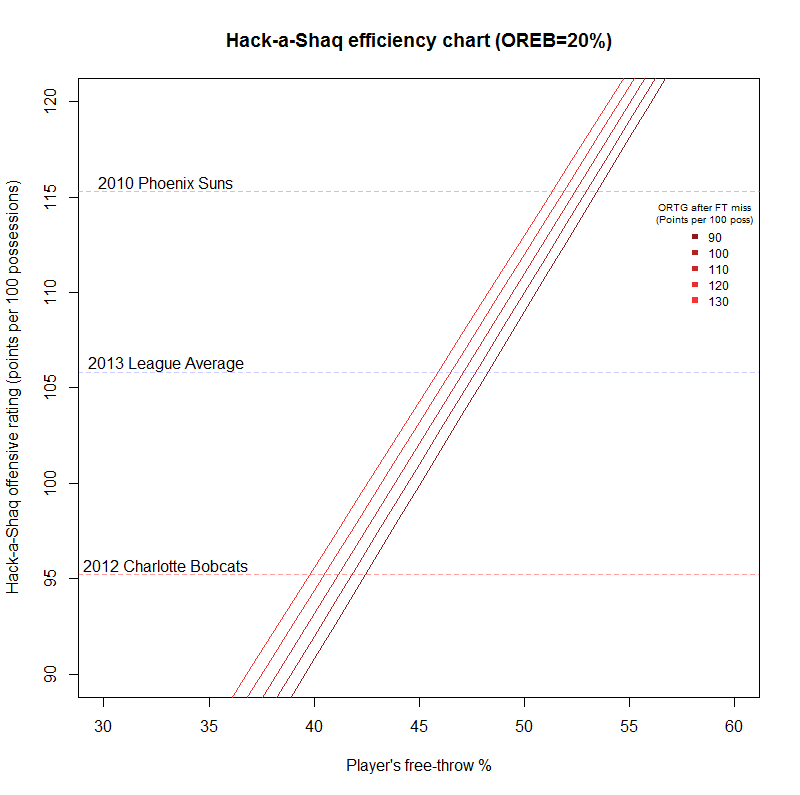No team could be happier with new ownership. The Clippers are now a legitimate franchise with two superstars, one they even drafted, and a stable of useful supporting guys and a solid coach. They’re due for yet another high 50’s win season, and the future is bright. Now all they have to deal with is the pain from high expectations and title aspirations.
2014 in review
With a revamped bench and a new coach, the Clippers were poised for a breakout season. There was a lot of discussion about DeAndre Jordan being the next Defensive Player of the Year, and while he improved it was their offense that was special. They led the league in offensive efficiency despite Chris Paul being absent for an extended period. Blake Griffin led the team in his wake causing everyone to exclaim how he “took it to the next level” even though he was largely the same and had been improving in the nuances of the game every year. Yet they were not close to being full strength during the regular season. Jared Dudley was supposed to fill out their starting lineup and provide some shooting and defense, but he turned out to be a dud. Redick couldn’t stay healthy and didn’t clear 1000 minutes. They finished third in the west, but it could have been better.
The Clippers had an apparent easy series versus the Warriors, who were missing Bogut, but it took them seven games to knock off the team. (Naturally, Draymond Green’s greater role with Bogut gone helped tremendously.) Without homecourt advantage, the Clippers were starting from a disadvantage but the series looked winnable until the game 5 catastrophe: they gave up a 13 point lead in the fourth quarter and lost a controversial call. They lost the next game too, and that was it. Another title opportunity was gone.
Of course, there was the whole Sterling fiasco, which has been written about extensively everywhere. For one, it’s good that he’s been ousted while they’re successful because he doesn’t deserve that; and two, coming out from under that black cloud may help their players. Either way it’s good to see the new ownership.
Changes
Exit: Darren Collison, Jared Dudley, Willie Green, Ryan Hollins, Antawn Jamison, Danny Granger, Byron Mullens, Darius Morris, Sasha Vujacic, Maalik Wayns.
Enter: Spencer Hawes, Jordan Farmar, Chris Douglas-Roberts, Ekpe Udoh, C.J. Wilcox.
The Clippers cleaned out their bench after it was largely ineffective the previous season. Farmar’s replacing Collison as the backup point guard, though those duties are nominal with Crawford’s role. Dudley was tossed aside to save money, but he could have had real value this year on the bench; it’s the same with Green. Ryan Hollins was their backup center. Compared to Hawes on offense it’s like they played different sports. The Granger experiment failed, and Douglas-Roberts will soak up all the spare wing minutes. Udoh’s an intriguing, polarizing big man — he might have some hidden value but many people write him off because of his offense and rebounding.
Player spotlight
On a team with the unstoppable duo on offense in Blake Griffin and Chris Paul, the Clippers picked up a three-point shooting big man. Spencer Hawes has been an under-the-radar center for a few years playing mostly in Sacramento before a change in style in Philadelphia — yes, he jumped on the three-point bandwagon and has started launching them with reckless abandon. From the bar chart below, he shot an above average rate of three-point attempts and not just for centers. He was about average in usage rate and shooting efficiency, but his assist rate was superb for a frontcourt player at the 60th percentile. He also drove to the basket a couple times a game and pulled-up for shot attempts. This makes him a versatile, varied offensive weapon and one few centers see often.
Hawes isn’t known for his defense, but he’s genuinely been pretty good the past two or three years. He’s always blocked a fair number of shots and rebounded very well on defense — his height helps there. His eFG% was extremely good past the 90th percentile, which might be surprising. That stat covers two entire seasons and he’s switched teams twice, giving the regression a nice sample set, so it’s hard to wipe away those results. He does not, however, force turnovers. Lastly, his field goal protection at the rim was a mixed bag: defenders shot well at the rim but at least he was active and was near these shots. Given the disaster that was Philadelphia, perhaps we’ll see more coherent results this year.
Reputation changes quickly. Hawes was tagged as an inefficient and soft jump-shooter — the latter was probably unfair — for years. He had a sudden makeover: he stopped shooting long two-pointers, going from a proportion of a quarter of his shots to 6.7%, and went from shooting three-pointers at a rate of one every ten shots to one in every three. Referring to the shot chart below, he was an excellent shooter from behind the arc as well, and based on some of his career averages this is probably not a fluke. He’s at 41.6% for shots from 16 feet to the line and had 300 three-point attempts last season. He’s a straight-on shooter and doesn’t hide in the corner; he’ll be used a lot in pick-and-pop’s and as a looming threat when setting screens. However, he’s a tepid finisher inside for a big man, and he’s usually been around the league average marks.
The playlist below shows off his offensive game. The first video features a slow-as-molasses drive and pass back out to the perimeter. His drives are useful like a change-up in baseball, surprising defenders. He later scores when he’s left open under the basket. In the second video, Hawes pops out from the paint and shoots a three quickly at the top of the arc. The smaller defender who switches onto him has little chance at contesting it well. He does this again in the third video when his defender is trying to help contain Michael Carter-Williams. His post-game, which can be used if teams try to put smaller defenders on him, is shown in the fifth video where he spins on Gortat and hits a hook shot over him — though it’s a bit awkward. There’s a reason why Hawes gravitated toward the perimeter. He hits another three in the sixth video when the defense chases after Carter-Williams; he’ll have plenty of those opportunities with Paul and Griffin. Finally, he scores at the basket when his defender challenges someone else.
Hawes experimented with running the point when he was younger, and it shows. In the video below, he hits a cutter at the rim from his favorite perch atop the three-point line.
Unlike most other stretch big men, Hawes is is a legitimate seven-footer and fully center-sized. In the first video below, he comes over for a weak-side block on the athletic DeRozan. Centers aren’t immune either, as Valanciunas gets rejected at the rim too. DeRozan again attacks the basket and this time with a fancy spin move, but Hawes is waiting there and knocks it down. He’s not a pushover in the low-post either, as he blocks Howard three times in this link.
Spencer Hawes took the leap and became a high-volume three-point shooter, and it led to recruitment from top teams where he finally settled on Los Angeles. He’s a really good passer too and should develop nice chemistry with Griffin in a high-low game. Doc Rivers will also use him as a power forward next to Jordan. Hawes isn’t fast enough for the perimeter, so those lineups will be selected carefully. But he’s a good interior defender who rebounds and blocks shots. In the right system, this guy could flourish, and now’s his time.
2015 projected
Given the choice between the experience of pain and nothing, I would choose pain.
-Faulkner
The playoffs were a nightmare for the Clippers, struggling to close out the lower seeded Warriors and giving up a big lead to the Thunder when the series was tied. But the Clippers had endured decades of irrelevance with not only no playoff heartbreaks, but few playoff experiences to begin with. Even if the Paul-Griffin core never wins a title, people should not consider it a failure. Being there is part of the joy. Clippers fans, a rare breed before Griffin, will get to see uncharted territory.
Los Angeles has the same core as last season, which isn’t a bad sign: they had the best offense in a league that also had the Spurs, LeBron and the Heat, and Dirk and the Mavs. Any major differences will result from a different pattern of injuries. Blake Griffin has taken over the mantle as the team’s best players in many eyes, but the real leader here and the driving force behind that amazing offense is Chris Paul. Paul’s a maestro with the ball, getting to wherever he wants on the court while never turning over the ball and always remaining a threat to pass or even to score. His three-point shooting percentages have been weak recently, but he’s a great midrange shooter and his ability to reduce turnovers cannot be overstated. Using pure point ratio, an alternate form of assist-to-turnover ratio, Chris Paul is probably the best in the non-Stockton/Bogues division and his 2008 season rated as the eighth best ever. In fact, last season he delivered another incredible PPR of 14.3, and he’s probably being underrated by the metric. Few point guards on that chart shoot as often as he does.
Griffin, meanwhile, devoted a ton of hours over the summer developing his jump shot. The Karl Malone comparisons have already been spoken and with Blake’s athleticism a great jump shot would make him high unguardable. Of course, we’ve been down this road before, but any progress would be helpful and the form does indeed look better. If the Clippers take the top seed in the west, look for a strong MVP campaign for him given that Chris Paul’s minutes are likely to be a lot lower.
One thing Griffin will have problems doing is averaging a double-double again because DeAndre Jordan is a monster who feeds on rebounds and there’s only been one instance in recent history where teammates both averaged double-digit rebounds. However, this was in the same city: Lamar Odom and Pau Gasol. Defensive centers can take a long time to develop, so let’s not fault Jordan yet for not reaching the next level. He still leaves his feet too much and he might focusing on grabbing rebounds at the expense of letting his team rebound sometimes. Overall, he’s still a plus on defense and has a lot more potential to fill in. People ignore his offense save for his dunks, but he’s such a threat for an alley-oop or dunking when he’s even a few feet from the rim that defenses have to keep track of him and he creates “negative spacing” in the way that a three-point shooter does. But his free-throw shooting is so poor that it justifies the Hack-a-Shaq strategy and with such a potent offense it’s a wonder it’s not used more often. Spencer Hawes could be an even more important signing here because he’s a pretty good inside defender and he’s good enough to play crucial minutes when Jordan’s shooting is an issue. I’ve thrown in an old graph below assuming a fairly high offensive rebound rate after a missed free throw. As you can see, shooting in the low 40’s from the line translates into an awful team offense.
On the wings, Redick and Barnes are perfectly cast here. Redick has remade himself into a Ray Allen-lite, running around screens for catch-and-shoot three-pointers and giving Paul an high-octane weapon behind the line, but he can also pass and put the ball on the floor, acting like a secondary ballhandler. His defense at the worst is average now, and for a shooter like him that’s very useful — he’s no liability. Barnes will remain their wing stopper as long as Bullock is not yet of age. He’s getting older, but he’s still athletic, he has great length, and he’s, well, combative.
The bench is where things can go haywire. Farmar at his best is a backup point guard and the team can’t rely on him in the playoffs. Crawford will be used a lot as their second point guard, but he’s a DH at this point. Then you have Doc Rivers stockpiling guys who were only relevant in the eastern conference playoffs five years ago. The fewer minutes given to Glen Davis and Turkoglu, the better — no offense to them. At least there’s Hawes, and Rivers will have to rely on him with Jordan in a two seven-footer arrangement in the frontcourt. Management has been shaving off depth for years, but perhaps with a new front office, a huge TV deal, and a string of high win seasons in LA will let them spend heavily. The team’s close enough to a title where it’s certainly possible. They need just a little more.
Summary
Going purely by ratings and projected wins, the Spurs and Clippers are virtually tied, but if I had to choose one to win the west I’d choose the Clippers. One reason is that the ratings I have inexplicably like Ryan Hollins and don’t care for Hawes and Udoh, even after some modest adjustments. (Some of that was being tainted by Philadelphia for Hawes; that makes everyone look like a worse defender.) Plus, I was conservative in giving Redick minutes, and if he’s indeed healthy and can play well over 2000 minutes the Clippers could have a lock on the first seed. Health is, of course, the controlling factor, but that’s true of every team. The Clippers have multiple seasons now of playing like a title contender and have been slowly getting slightly better. They haven’t been to the finals, or even the conference finals, and the bias people have against teams without experience will keep them from being favorites. Yet Doc Rivers has won championships both as a player and coach, Chris Paul is hyper-competitive and should do fine deeper in the playoffs, and they have role players who have been there like Glen Davis and Turkoglu. People had the same criticisms of Boston in 2008. But with Durant out for a while, a top two seed will be easier to grab, and they should have an easier path to the conference finals.
Just remember how quickly things change. The Clippers are perennial contenders now while the Lakers are doormats with a bleak future. What seems impossible is only such because we’ve never seen it before … until it happens, and then we retroactively make sense of it. The Clippers are a high-level, competitive team, and they may well go further than we ever dreamt possible for the franchise. And their season starts now.
Wins: 57
Losses: 25
Conference rank: 2nd
League offense rank: 2nd
League defense rank: 11th




















